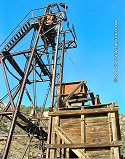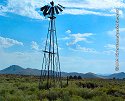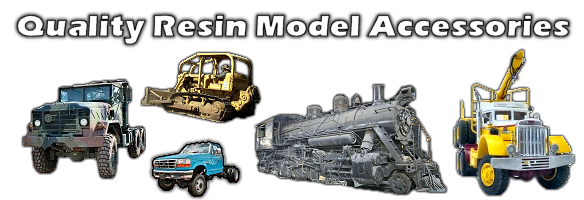|
| |
REFERENCE
SECTION: GHOST TOWNS & ABANDONED MINES
PIOCHE & SURROUNDING AREA, NEVADA |
Pioche
is a great little "living ghost town" located in central
Eastern Nevada, near the Utah border. It was first settled in 1868,
and became the county seat for Lincoln County in 1871. Lawlessness
raged in Pioche, and it is said that 78 men were murdered before
the town saw its first natural death; talk about the Wild West!
Full scale mining has operated in the area since initial discoveries
were located in the late 1860s all the way up to around 1978; smaller
scale operations continue to this day, including the still-working
Prince Mine (west of Pioche). The first truly independent narrow-gauge
railroad in Nevada was built in 1873 with the Pioche & Bullionville
Railroad (aka Nevada Central Railroad, no association with the later
rail line built in 1880 under the same name between Austin &
Battle Mountain, NV), formed to haul ore from the rich Pioche-area
mines to milling facilities at Bullionville, a total distance of
some 20 rail miles. The P&BRR was abandoned in 1881, but some
of the former grade was utilized for the Pioche Pacific Railroad
(built in 1891), which hauled ore from the No.1,3,5,7,9 Shafts and
Raymond & Ely mines on Treasure Hill to the Summit Mill (formerly
located near the Wheeler Monument by the current aerial tramway
station), and also featured a 15-mile long line north of Pioche
to Jackrabbit (originally called Royal City).
Mining activity in the 1870s was dominated by the Raymond &
Ely and Meadow Valley Mining Companies; in 1872 the recorded total
output from the Pioche area mines was an amazing $5,462,000, with
the Raymond&Ely mines producing $3,700,000 of that total! Dozens
of mines pepper the mountainsides surrounding Pioche, but some of
the more dominant mines in the immediate area are the No.1 Shaft
(a prominent feature of the area), the Raymond & Ely mine just
to the east of the No.1 Shaft, and the Nos.3,5,7,9 shafts (none
of which are publicly accessible today, although a private mining
company currently works the Nos.5 and 7 shafts). The Burke Tunnel
was created to access the lower levels of these shafts & other
mines nearby, and provide an easier way to remove the ores from
these lower levels & deposit these ores into the aerial tramway,
for processing at the PCM&R mill.
In 1890, following a slump in mining activity, the Raymond&Ely,
Meadow Valley, and Yuba Mining Companies were merged into the Pioche
Consolidated Mining & Reduction Company, with famed mining magnate
William S. Godbe at the helm. The PCM&R bought the remaining
assets of the Pioche & Bullionville RR, and in 1891 started
construction of the Pioche Pacific Railroad. The new rail line ran
from the area of the current aerial tramway (next to old No.9 Shaft),
along the hillside westerly to serve the R&E mine and No.1,3,5,7,9
Shafts, then eastward downhill to the new PCM&R mill built to
the east of town. A later 15-mile extension was built northwest
to Jackrabbit (aka Royal City), to serve the mines there & at
Bristol (via aerial tramway). The railroad originally carried ore
to the Summit Mill, until completion of the PCM&R smelter at
West Point. The Pioche Pacific ran sporadically until 1948, when
it was finally abandoned.
The PCM&R smelter (which still remains intact today, gaurded
by a watchman) was built in 1891 just to the east of Pioche, at
a place called West Point, to process the ores mined in the area;
the original mill burned in 1893, but was subsequently rebuilt.
The Pioche Pacific Railroad (PPRR) built a spur to the mill to more
efficiently haul ore directly from the mines on Treasure Hill to
the new mill. In 1907 the Union Pacific built a standard-gauge line
from Caliente to the PCM&R mill, using some of the former P&BRR
grade through Condor Canyon. Now the ores processed at the PCM&R
mill could be hauled to markets even less expensively than before.
In 1912 the owners of the Prince Consolidated Mining Company (located
on the western side of Treasure Hill, about 2 miles or so from Pioche)
completed the Prince Consolidated Railroad, a standard-gauge line
that ran northwards around Treasure Hill, then turned eastward to
cross the narrow-gauge Pioche Pacific RR at a point named Atlanta,
and eventually connect with the UPRR's Pioche Branch behind the
PCM&R smelter. This railroad line, along with the entire UPRR
Pioche branch from Caliente, would lie in place until 1985, when
the UPRR finally abandoned & scrapped the line. Reportedly,
the entire line was offered at a fair price to the Lincoln County
Commission in the very early 1980s, but the county commissioners
declined the offer due to lack of funds; many in the area lament
this, as they point to the success enjoyed by the Nevada Northern
Railway just a short distance north of them in Ely, and believe
that they could have duplicated this success had the Lincoln County
Commission purchased the former Pioche Branch (from Caliente through
Pioche to Caselton & Prince).
Interestingly, the line from the PCM&R mill to Prince was initially
operated as an independent line, the Prince Consolidated Railroad.
It had its own locomotives & rolling stock, and in 1918 the
Virginia Louise Mine won a court decision allowing it the right
to ship ores over the PCRwy line. The original 2 steam locomotives
were operated by the PCRwy up to around World War II, after which
(from what I have learned from locals) the steam locomotives were
retired/scrapped and the UPRR subsequently handled all rail traffic
over the line until abandonment. The Prince Mine continues to be
worked to this day, and the Caselton properties were consolidated
under Combined Metals Reduction Company ownership. In 1929 CMR concluded
that the best way to access the abundant ore deposits under Treasure
Hill was to sink a shaft on the western side of the mountain, just
northwest of the Prince Mine; this became the Caselton Shaft, and
from the 1200-foot level built an 8,000-foot long tunnel to connect
the Caselton shaft with the No.1 Shaft on the Pioche side of the
mountain. The plan at the time was to have all ores from these mines
to be removed at Caselton for processing at a future extensive CMR
mill, while the No.1 Shaft would handle only men and equipment.
The new, massive CMR mill was constructed in 1940 and operated up
until 1978, when it was idled and is currently guarded by several
watchmen. Interestingly, larger mills & smelters were physically
able to be constructed, but the massive power requirements were
more than could be handled by even the biggest diesel, coal, or
steam generators at the time; however, once the Hoover Dam was finished
and an electrical transmission line was completed to Lincoln County
after 1936, sufficient electrical power became available to move
forward with construction of mill facilities at Caselton.
In 1923 the Combined Metals Reduction Company (CMR) purchased the
PCM&R mines, properties, and smelter. In 1929, to handle the
increased output from the re-opened mines and to take advantage
of new refining methods, the PCM&R smelter was reconfigured
into a 250-ton flotation concentrator; shortly after being placed
into operation the entire complex burned to the ground but a completely
new facility was constructed and placed into operation by 1930.
At the same time, an aerial tramway was built from the newly-reconstructed
mill to the area of the No.9 Shaft, next to the Wheeler Monument,
to more efficiently transport ore from the mines to the new concentrator
& mill. This aerial tramway still survives to this day in fantastic
condition, and is an icon for the area.
Over the decades the area mines were operated when gold & other
mineral prices remained high enough to be mined profitably, and
then idled when prices dropped. Currently there are several mines
being reopened as the price of gold remains at historic highs, so
if you decide to visit the area, please respect the "Private
Property" and "No Trespassing" signs, gates, and
fences.
Please be sure to visit the town
of Pioche if you are in the area; it enjoyed a slight population
swell in the early 2000s with retirees from the Las Vegas area moving
there, and is an extremely friendly small town. Please be sure to
patronize the businesses there, and stay the night in one of the
various establishments. The famed (or infamous) "Million Dollar
Courthouse" offers daily tours in the warmer months and is
well worth a visit; it gained its moniker as it was originally budgeted
to be completed in 1871 for $16,000, but delays, legal wrangling
& litigation, and the monumental interest accrued on the original
construction bonds due to all the delays ended up costing the county
taxpayers nearly one million dollars! In fact, the final interest
payment was made in 1936, 65 years after the courthouse's
completion! Be sure to also drop in to the local museum, which
is absolutely fascinating & a veritable treasure trove of historical
artifacts.
|
|

Pioche, Nevada (1995-2010)
[ Multiple Images ] |

Bristol Wells, Nevada (2009)
[ Multiple Images ] |

Caselton, Nevada (2009)
[ Multiple Images ] |

Ely Valley Mines, Nevada (2009)
[ Multiple Images ] |
|

Jackrabbit, Nevada (2009)
[ Multiple Images ] |

Prince, Nevada (2009)
[ Multiple Images ] |
|
|
|
| |
|
|
|
|
 Back to Ghost Towns
& Abandoned Mines Page
Back to Ghost Towns
& Abandoned Mines Page
|
| |
Silver State Specialties was created in 1999 to offer quality resin
accessories, replacement parts and conversion kits, suitable for
many 1/25-scale plastic model kits. SSS specializes in accessories
and parts for plastic model pickup, SUV, 4x4, and heavy truck &
trailer kits. 1/32-scale and 1/35-scale parts and accessories
will be available in the future for model truck kits, such as the
1/32 Monogram Snap-Tite and ERTL snap-together kits, as well as
1/35-scale Revell, Italeri, AFV Club, Trumpeter, Airfix, Heller,
Tamiya, and other military model truck
 kits. Some of these
smaller scale model kits are quite well detailed, and a wide variety
of photo-etched, resin, and other accessories are widely available
for most of these military truck
model kits. What's even more exciting is the line of 1/24th &
1/25th-scale military model kits and conversions we are in the early
stages of developing, to nicely compliment your ERTL, AMT, Italeri,
Revell, and other brands of truck models. kits. Some of these
smaller scale model kits are quite well detailed, and a wide variety
of photo-etched, resin, and other accessories are widely available
for most of these military truck
model kits. What's even more exciting is the line of 1/24th &
1/25th-scale military model kits and conversions we are in the early
stages of developing, to nicely compliment your ERTL, AMT, Italeri,
Revell, and other brands of truck models.
Silver State Specialties is working on resin accessories and complete
kits for G- gauge outdoor garden railway trains ("Large Scale")
in 1/24th-scale. Some patterns have been completed, and many more
are under construction. These kits and accessories will include
complete Beyer-Garratt style of locomotives and Narrow Gauge ore
hopper cars, as well as 24-inch & 30-inch gauge industrial equipment
in this same scale.
SSS also has master patterns partially completed for many 1/16-scale
model truck accessories and conversion kits, mainly for the Monogram-Revell
1/16-scale model truck kits. Some projected accessories for
these 1/16-scale kits are front drive axles, different wheels and
tires, air cleaner accessories, pusher and tag axles, oil filters
and engine accessories, and possibly different engines. Cab
& hood conversion kits remain a possibility for these monsters
as well, but are still years away from being offered as there are
more pressing projects to push forward with first. But someday
they should be available!
Thank you for your continued support!
|
|
|











